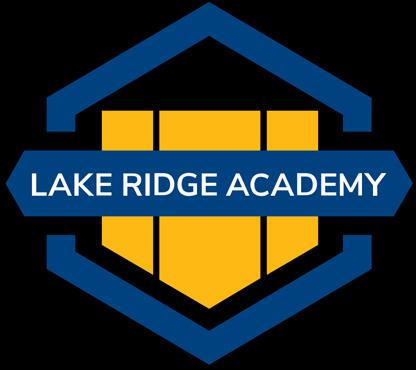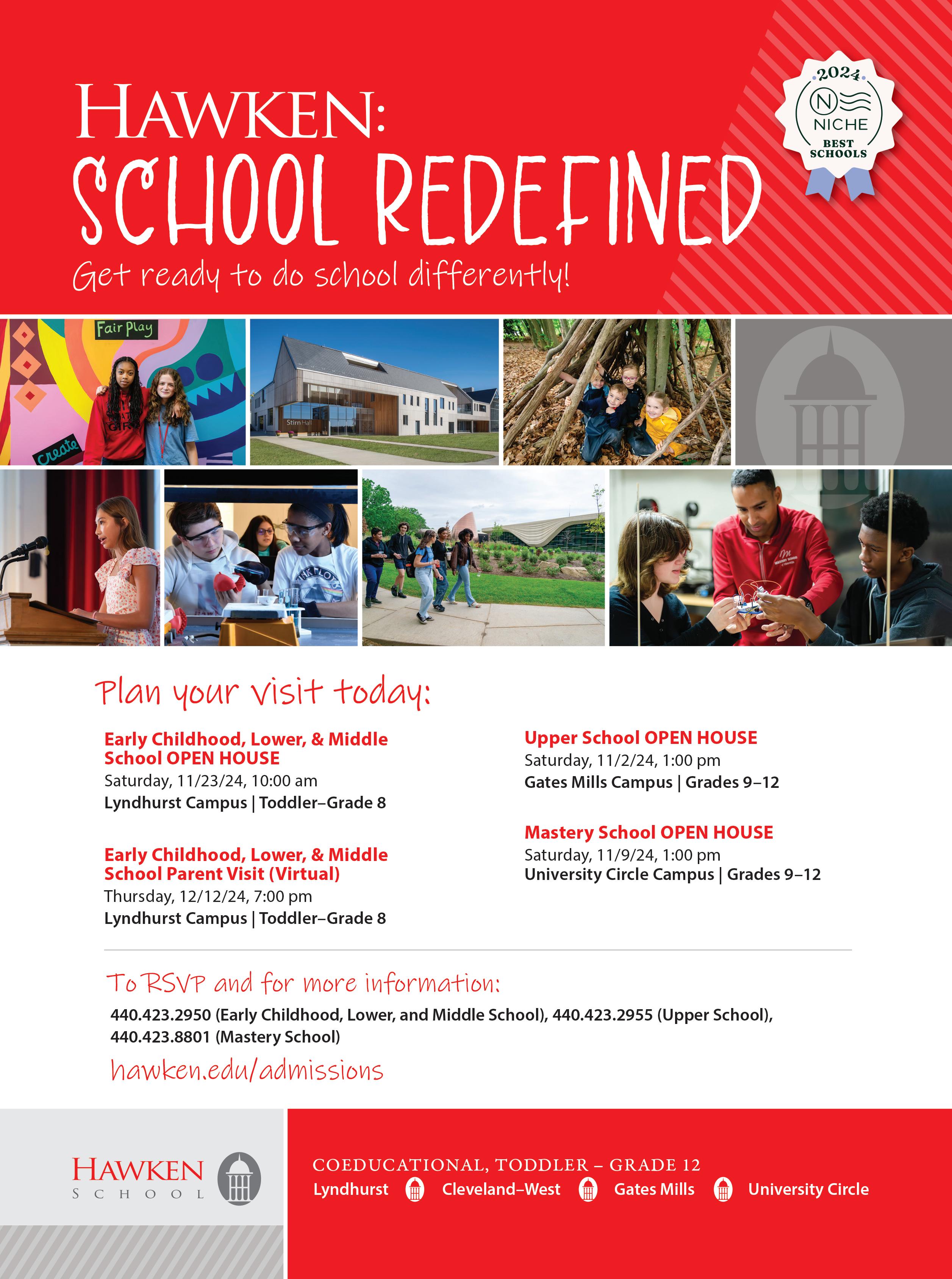





By Erin Sernoffsky
There’s no greater symbol of teenage independence than a driver’s license. At least that’s how it’s always been. But a change is slowly taking place as gen-
eral anxiety and a lack of motivation settle in over the newest generation of would-be drivers. While many teens still eagerly practice maneuverability, there’s a rising number
of kids who elect not to get their license.
“It used to be a rite of passage but it’s somewhat diluted,” says Dr. Luis Amunategui, PhD of University
- STORY CONTINUED ON PAGE 24 -
“ A parent’s approach to learning to drive makes a huge impact. Focusing on the positive aspects of learning — the excitement and independence — while also working to reduce the pressure to drive right away and eliminating high-stakes situations can go a long way.
Hospitals Behavioral Health Institute.
Since COVID Amunategui has noticed that teens are showing greater social withdrawal. Furthermore, access to cellphones and the internet mean teens no longer need to leave the house to connect with their peers and friends.
“There’s always been a subset of kids I treat that are anxious [and] who have low interest in learning to drive…But now there is also a lack of eagerness that is evident in teens,” Amunategui says.
Amunategui isn’t alone. Greg Anderson, founder of All Star Driving School and Teach With A Pro, agrees. “We have to identify what the reluctance is,” he says. “Sometimes they don’t want to put in the effort because they don’t see the need to drive. A lot of time, the people who are anxious to drive are fearful because they don’t think they can handle the information or they had a bad experience with someone teaching them to drive.”
A parent’s approach to learning to drive makes a huge impact. Focusing on the positive aspects of learning—the excitement and independence—while also working to reduce the pressure to drive right away and eliminating high-stakes situations can go a long way.
Amunategui recommends parents, “talk about this as a privilege and a skill that makes life so much better and richer. Parents create this expectation that we want you to develop this skill, while still having the mindset that it’s a gradual skill.”
However, even when parents employ high-positivity, low-pressure, family dynamics are a frequent roadblock and sometimes the best approach can be to step back.
“The main thing I would ask parents to consider is that the best instructor is not a family member. Get yourself out of the family teaching loop,” recommends Amunategui.
This dynamic is so common Anderson launched Teach with A Pro, an online subscription series of short videos, all dedicated to teaching new drivers critical skills before ever getting behind the wheel.
Anderson’s goal is to provide a third-party expert so teens are less likely to question their parent’s judgment and authority. By watching the videos together, parents and teens can practice skills or address any questions. The series is especially effective if families watch prior to the teen starting drivers’ education so they are equipped with knowledge before being put on the spot by an instructor.
The expert guidance on the videos also helps parents close the gap between what their teen needs to know and what they may not remember or think to teach. Anderson asks parents, “How much information did you forget about driving and how do you communicate something you forgot or don’t think is important? Driving becomes watered down if the parent is teaching without expert help.”
Another major tool in combating driving anxiety is to break it down into manageable parts.
“One of the best ways for parents to help someone who has anxiety about driving is separating out the skills—car control skills, scanning and hazard recognition, and critical decision making-skills,” Anderson says.
It’s much harder for a new driver to learn to make a left hand turns on a road when they’re also expected to scan for road signs, notice other drivers, unexpected dangers, and maintain a speed limit all while understanding how far and fast they need to turn a wheel without hitting a curb.
Instead, Anderson teaches car control in an isolated environment— by having drivers practice figure 8’s in an empty parking lot.
“There’s no danger, they can get up to 15-20 miles per hour and can practice turning both ways. The pressure is gone and they are often ready to try driving on the road so much sooner,” he says.
He also utilizes the “I do it, we do it, you do it” approach to hazard recognition and critical decision making. With the teen as the passenger, parents and instructors first narrate what they are doing. For example, when coming to an intersection the driver can tell the student that they notice it’s a four-way stop, when to begin slowing down, the position of the other cars, when they use their turn signal, where they notice a crosswalk, and so on. Later, the student is asked to point all of these out. Anderson even recommends students point out all the white cars they see on the road.
Once teens have mastered the skill of visually scanning surroundings they can then practice critical decision making in a no-stakes scenario by telling the driver what to do in a given situation.
“We want to turn them into the worst backseat driver in the world,” Anderson says. “You want them telling you everything to do and what you should be doing. We’re building habits and awareness. It reduces the stress for when it’s their turn. It truly works wonders.”
By setting positive expectations, removing pressure to drive immediately, breaking lessons into manageable parts, and bringing in experts, it can help parents be a major ally in building their teen’s confidence and helping them to be safer behind the wheel.
“I would love to tell every parent this one thing,” Anderson says. “I would much rather have my kid driving than them being a passenger of another kid driving. Because you don’t know what the other kid knows or learned.”




By Joel Hammond
High school students and their parents seem to have more on their plates as everyone balances multiple schedules from sports, academics, work and after-school activities. For high school families, they also have the crunch of getting everything done before it all ends, including figuring out future steps, whether it’s college or career. We spoke with a few parents who provided tips on how to keep things moving in the right direction.
1. FOCUS ON ACADEMICS FIRST.
That’s the rule in the Griffin household in Strongsville, where Jackson, the youngest of three kids, is a senior — and a four-year starter at defensive back on the Mustang football team, senior class president and a member of the honors orchestra, among other things.
“The thing we celebrate the most for our kids is not athletics or extracurricular success but rather academic success,” says Kevin, Jackson’s dad. “The only other real rule was that if you start something you have to finish it, be it a sport, team or club.”
2. ESTABLISH SUPPORT GROUPS — FOR STUDENTS AND PARENTS.
Griffin says peer groups have been instrumental for his son and he and his wife, Farrah.
“We’ve always encouraged our kids to establish a strong group of friends who share similar priorities and values. Jackson’s friend group keeps him accountable and they push and support each other.” As they’ve navigated their kids’ maturation and growth, though, parent peers have been important, too:
“Having other parents to talk to about this topic was helpful,” Kevin Griffin says. “We didn’t want to overlook
a blind spot we might have as parents. Conversations with other parents plus older folks who had been through the process were always helpful.”
3. COMMUNICATE — CALENDARS AND GROUP TEXTS. Matthew Contipelli, a senior golfer in Solon, and his sister, Kate, a sophomore runner and band member, are constantly on the go, says their mom, Stephanie. Communication, then, is key. Everyone has a separate color on their shared calendar, and their family group text thread is always humming.
“Everything goes on the calendar: family commitments, sports, games, tournaments, my husband’s work travel —everything,” Stephanie Contipelli says. If Kate needs to be picked up or dropped off unexpectedly, that goes in the group chat, and Matthew — whose agreement for getting a car was dependent upon him driving his sister when his mom and dad can’t — jumps in.
4. FAMILY TIME EVOLVES — BUT REMAINS CRITICAL.
Dinners together are fewer and farther between, but family time has turned into trips to Target, errands or

elsewhere for the Contipellis. They also view golf tournaments as little getaways they otherwise wouldn’t enjoy: If he golfs for two days across the state, Mom, Dad and Kate go; one day, Mom walks with Matthew and Dad takes Kate shopping.
“We must meet them where they are right now. If they ask me to do anything, I always say yes. I’ve become more comfortable with the house not looking perfect all the time if it means I spent time with the kids.”
5. MAKE CLEAR TO STUDENTS THAT THEY’RE LOVED UNCONDITIONALLY.
As students go, go and go some more, sometimes it’s easy to let the most important things lose priority. Kevin Griffin says that he and his wife tell their kids, and any other parents who will listen, that their kids must continu-
ally understand the love their parents have for them.
“The sports outcomes, the scores, records and results, don’t matter,” he says. “What matters is how the kids prepare and learn from the lessons sports and activities teach. We’ve drilled this into our children early. Balancing unconditional love with accountability, including commitment, hard work and being a good teammate, has proven to be the key in our household.”
6. UNDERSTAND ONE TRUTH: FATHER TIME IS UNDEFEATED.
“It is really hard to balance everything,” Stephanie Contipelli says, “but I want to be at each event and try to look at it as a privilege, rather than an obligation. At this point, I can see the years of getting to watch their events is quickly coming to an end, so I try to appreciate each one.”


By Shana O’Malley Smith
Just when you think you have the high school years figured out, the college planning begins.
During your teen’s junior year of high school, they will likely take the ACT (American College Testing) or SAT (Scholastic Assessment Test), to assess college and career readiness.
According to the Ohio Department of Education and Workforce, “state law requires districts and community schools to administer the state-funded ACT or SAT to all grade 11 students in the spring of the school year. Each year, districts and schools will select the test to administer to their juniors.”
If your child is planning on attending college, having a good ACT or SAT score can help them stand out and increase their chance of acceptance.
While these tests are taken in 11th grade, planning begins well beforehand. Here are a few ways to prepare and maximize testing opportunities.
1. START THE PROCESS EARLY. Attend an informational session offered by your local school district or library. This will give you an idea about what resources are offered through your school or community. Some parents start gathering testing information when their child begins eighth or ninth grade.
2. MAKE A TESTING TIMELINE. Determine the date you plan on having your child test and work backwards from there.

For example, if your child is testing the fall of junior year, you’ll want to make sure to plan for test registration (2 months out), studying and practice testing (3-4 months out), pre-testing and tutoring (6+ months out). Tests are offered multiple times throughout the year so you can figure out a time that works best for your child’s schedule.
3. MAKE A LIST OF TOP 5 COLLEGES AND LOOK AT THEIR AVERAGE TEST SCORES. A quick online search will tell you the average ACT and SAT scores for students accepted into the universities your child is considering. For ACT, look at the 25 and 75 percentile for a good range. This will help determine the score your child will want to achieve on their test.
4. TAKE PREP TESTS. Students can take the PreACT or PSAT beginning in eighth, ninth or 10th grade. These shorter exams help students practice for the ACT and SAT, provide a baseline score and a benchmark for areas of strength and weakness. The scores from the PreACT and PSAT do not count toward the actual ACT and SAT and are only meant for practice. It is advised not to take the ACT or SAT to use as a baseline because those scores go on your child’s permanent record.
5. FIND THE BEST STUDY STRATEGY. How does your child learn the best? Figuring out their studying style and sticking to a study plan will keep your student
organized and prepared. According to UWorld College Prep, students should begin studying for the ACT and SAT about three to four months before the actual test. You may also consider using a tutor or taking prep classes.
6. READ, READ, READ! Read materials outside of school assignments, especially non-fiction magazines and journals. This can help improve grammar, vocabulary and critical thinking skills.
7. PRACTICE SITTING FOR TEST DAY. The ACT is 2 hours and 55 minutes, with a 15-minute break. If you choose to do the optional writing portion, it’s an additional 40 minutes. The SAT is 2 hours and 14 minutes of testing time, with a 10-minute break. Your student should get comfortable sitting at a desk and testing for long periods of time. A parent or sibling can proctor a practice exam by setting a timer and enforcing test day rules such as not using a phone or electronic device, no restroom breaks and no eating or drinking during the test.
8. PLAN TO TAKE THE TEST MORE THAN ONCE. It’s OK and common to take the ACT or SAT more than once. In fact, many colleges allow “score choice,” which allows you to only share your best test score with them. If a college requires submission of all test scores it may show consistent improvements made.

Benedictine High School, situated in Cleveland, Ohio, is a prestigious Catholic school exclusively for boys.
Established in 1927, it has a rich history of providing excellent education in the spirit of St. Benedict. Their commitment is to nurture the holistic development of students by offering leadership programs that facilitate growth in mind, body, and spirit. They encourage boys in grades 7-8 to visit and experience what being a Man of Benedictine means for them. 216-421-2080, cbhs.edu

Hawken School offers two high school options: the Upper School in Gates Mills and the Mastery School of Hawken in University Circle. The Upper School guides students to embrace the intrinsic value of learning by providing opportunities for student inquiry, analysis, agency, experimentation, and leadership. The Mastery School immerses students in real-world problem solving with a focus on personalized, project-based learning and an assessment model that leads students to learn deeply and persist to Mastery. Call or email admissions@hawken.edu or 440-423-2950. hawken.edu/ admission

Holy Name High School, founded in 1914, educates its students through the Triple Threat model–mind, body, spirit. They believe that a well rounded student is one who not only excels in the classroom, but also in extracurriculars and in their faith. Following their college preparatory curriculum, students at Holy Name can choose from over 100 courses ranging from Business/Technology to Performing Arts, will partake in career shadowing, and will earn service hours through various volunteer opportunities. 440-886-0300, holynamehs.com
Life at Lake Catholic offers a transformative education grounded in faith, academic excellence, and community service. With a rigorous curriculum, diverse extracurricular activities, and a commitment to developing well-rounded individuals, students thrive in a supportive environment. The school’s dedicated faculty and staff foster personal growth and spiritual development, preparing graduates for success in life beyond high school. Come to Lake Catholic and discover all the ways you can create your extraordinary future. 440-578-1020, lakecatholic.org

Lake Ridge Academy is the only independent college preparatory school on Cleveland’s west side. Their K-12 co-educational curriculum offers a unique blend of rigorous academics, extracurricular activities, and a focus on wellness and character development. With a student-teacher ratio of 8:1, their devoted faculty provides personalized attention to help every student thrive. Come visit their 93-acre campus and see the Lake Ridge difference. Their next preview day is September 30. Register at lakeridgeacademy.org/admissions/visit.

Are you looking for a high school that offers the FLEXibility you need? FLEX High School provides a path to graduation that is flexible, personal, unique, and completely free. We focus on providing a safe educational environment, so that you may focus on your goal of obtaining a high school diploma. Students love the quiet, one-on-one attention they receive from their teacher mentors. Enroll anytime (877) 494-FLEX (3539).

At Magnificat High School, young women learn with purpose, lead with faith, and serve with impact. Students are challenged academically and encouraged to explore individual interests through engaging co-curricular programs, competitive athletics, dynamic artistic offerings, and service learning. The faith-filled environment is rooted in Catholicism while welcoming students of all religions and backgrounds. Friendships are made to endure into an alumni sisterhood that spans generations and lasts a lifetime. 440-331-1572, magnificaths.org

